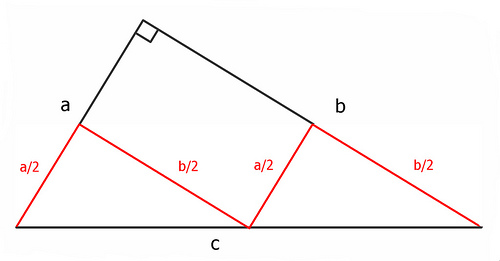This is rather amazing. Arrange a deck of cards in this order, top to bottom:
A♣, 8♥, 5♠, 4♦, J♣, 2♥, 9♠, 3♦, 7♣, Q♥, K♠, 6♦, 10♣,
A♥, 8♠, 5♦, 4♣, J♥, 2♠, 9♦, 3♣, 7♥, Q♠, K♦, 6♣, 10♥,
A♠, 8♦, 5♣, 4♥, J♠, 2♦, 9♣, 3♥, 7♠, Q♦, K♣, 6♥, 10♠,
A♦, 8♣, 5♥, 4♠, J♦, 2♣, 9♥, 3♠, 7♦, Q♣, K♥, 6♠, 10♦
Now:
- Cut the deck and complete the cut. Do this as many times as you like.
- Deal cards face down one at a time, stopping whenever you have a substantial pile.
- Riffle-shuffle the two packs back together again.
Despite all this, you’ll find that the resulting deck is made up of 13 successive quartets of four suits–and four consecutive straights, ace through king.
The reasons for this are fairly complex, so I’ll just call it magic. You’ll find a full analysis in Julian Havil’s Impossible? Surprising Solutions to Counterintuitive Conundrums (2008).












